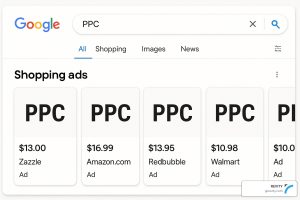Email retargeting, and creating custom audiences for that purpose, continue to prove their value for businesses.
If you want a reliable way to expand your business and retain loyal customers, email retargeting can be your most effective tool . Your email list is something owned exclusively by you; it is your direct channel into the inbox of your customers.
The concept of email marketing is often misunderstood. Without deliberate care, your company could be black-labeled – unable to send messages to users. Segmenting your audience and providing relative and useful content to them helps prevent black-labeling and promotes sales and growth.
Here are some things you can do to segment your audience and improve your marketing strategy.
Gather Information
Information is crucial in marketing. If you want to wield email marketing as the powerful marketing tool it is, you need to understand that point.
The more information you can gather about your audience, the better your ability to offer them useful products and information. Sending the same generic message to a massive email list runs the risk of high unsubscribe rates.
This is contingent on you having an active email list with emails you have collected legitimately. You can’t gather person-specific data with numbers for website hits and page views.
Most email marketing software is capable of segmenting and storing information related to each user. Segmentation becomes a challenge of filtering out who from your list wouldn’t want to receive content related to specific events, items, services, etc.
Try to get as specific as you can when you segment your audience. The more specific and personalized you can make your emails, the more effective they will be.
How to Segment Your Audience?
1. Segment Through Onboarding
Does your product or service have different applications? If your target audience is broad, you can’t help but create broad-reaching emails. These won’t do as well as targeted emails because of their broad reach.
Try to determine a few big segments for your audience. Do everyday consumers use your product differently than a business would? Do your products and services change based on demographics?
You could even segment as to what kind of material you provide. If some members of your audience are more engaged with videos, take note! You wouldn’t want to send these audience members written text they aren’t likely to read.
2. Segment through Activity
Are some members of your target audience more active than others? Every business is bound to have users with different levels of engagement. Creating a custom audience using user activity is a popular and profitable way to segment your audience.
Someone who is highly invested in your brand wouldn’t need to receive material written to establish credibility. A new customer would probably want to see more reviews before completely committing.
Here are some examples of different types of audience members.
- No Engagement: Those in this first category have signed up initially for an incentive. Maybe that incentive is a discount; maybe it’s a digital download. These customers may have received an entire welcome flow of emails without engaging in any of them. Even with an initial incentive, they aren’t opening/clicking on links in the emails you send them. You will likely see the most unsubscribe requests from this list. This audience needs some convincing that they need your product or service and need a good reason to trust you to deliver that to them.
- Low Engagement: These are individuals who have engaged with your company on some level. They may have purchased an item from your eCommerce store or signed up for a free trial. In any case, they have accepted an additional call to action. It is hard to tell what these customers are thinking. Perhaps they have a problem with the quality of what you have to offer. Look through your reviews to see if you can find common things your customers are upset about.
- Optimal Engagement: There will be a few customers who frequently purchase your products or use your services, and may include those who don’t engage fiscally but regularly open your emails and click links. You may be able to segment these customers to upsell them on special deals or keep them informed about items in stock, new items, etc. It is important to recognize these individuals are loyal and valued customers. This validation helps promote brand loyalty.
3. Segment through Past Patterns
You may have a lot of users who were faithful to your brand but suddenly stopped engaging with you.
These customers are valuable. Because they were once loyal to your company, they can become so once again. Use a reengagement flow to invite them back to doing business with you.
You may be able to find out why they stopped engaging with your company by sending them an invitation to tell you about their experience with your company via a survey or review request.
4. Segment through Intent
This last one is most relevant to B2B businesses but has applications in B2C relationships as well.
Business personnel in every position may sign up and will have different intentions. Perhaps they are a manager looking to improve their flow while saving on administrative tasks. Maybe they are an executive looking to streamline their sales process and need help getting over the edge.
Not everyone who comes onto your email list will be the decision-maker in their company. Sending emails to them asking them to buy into your services probably won’t work.
Instead, you need to find a way to creatively consider a variety of individuals with your messaing. Initially, segmenting based on job position or responsibility can help you know who is most likely to buy into your company and if they have the power to do so.
Begin Experimenting
After you have begun segmenting your audience, you should start creating useful content for each segment would want to engage with.
Here is where your hard work segmenting will start to pay off. With any luck, you will have a clearer idea of what people in your audience are interested in and can create emails specific to their wants and needs.
Ask the Revity Experts!
If you don’t know where to start in creating custom audiences for email retargeting, our experts here at Revity can help.
Contact us today to see how we can help you achieve your goals through email marketing.
































